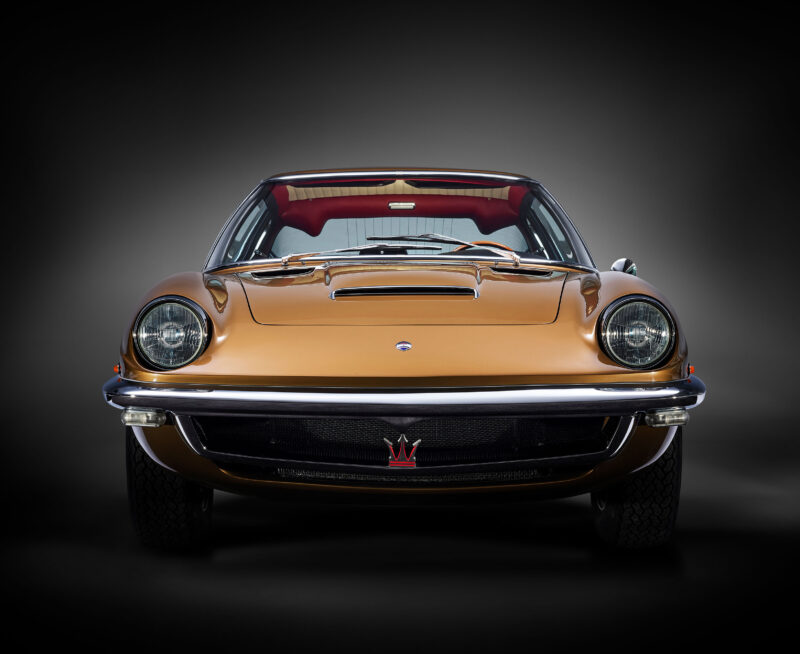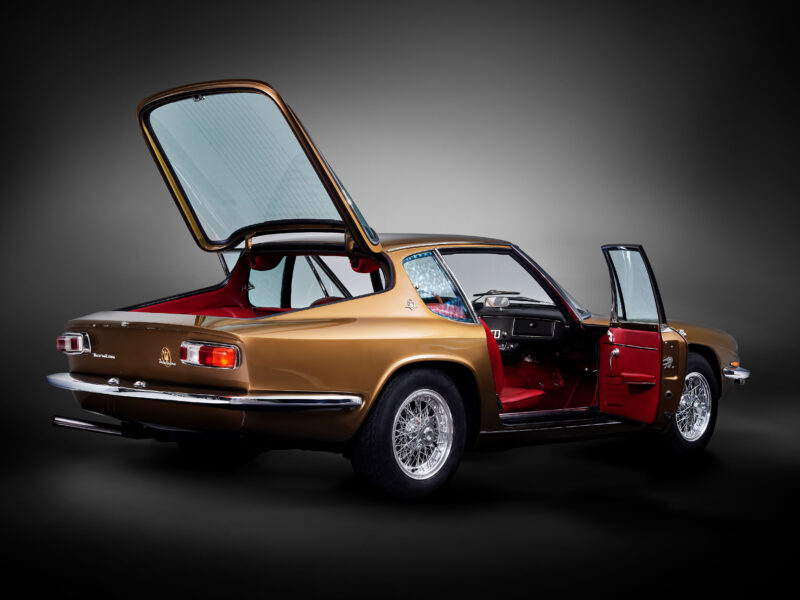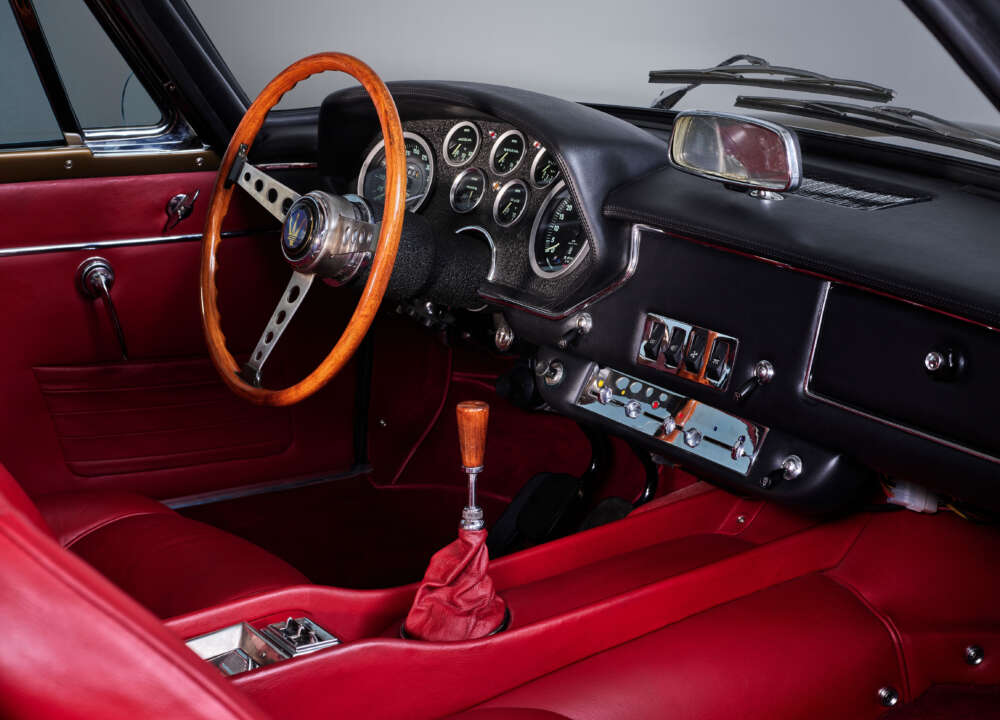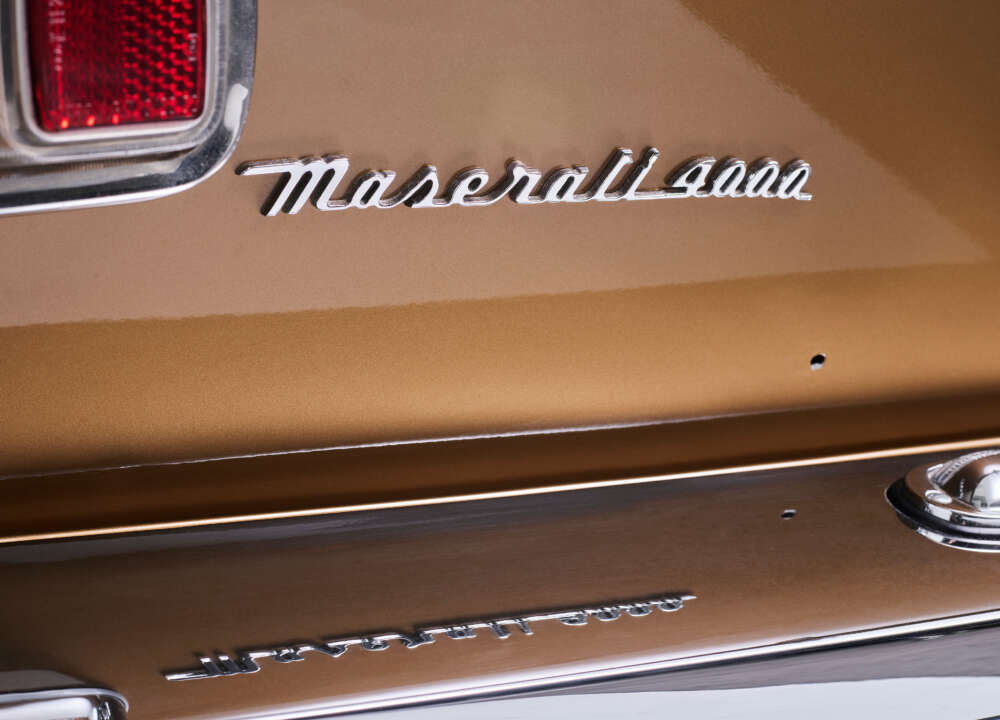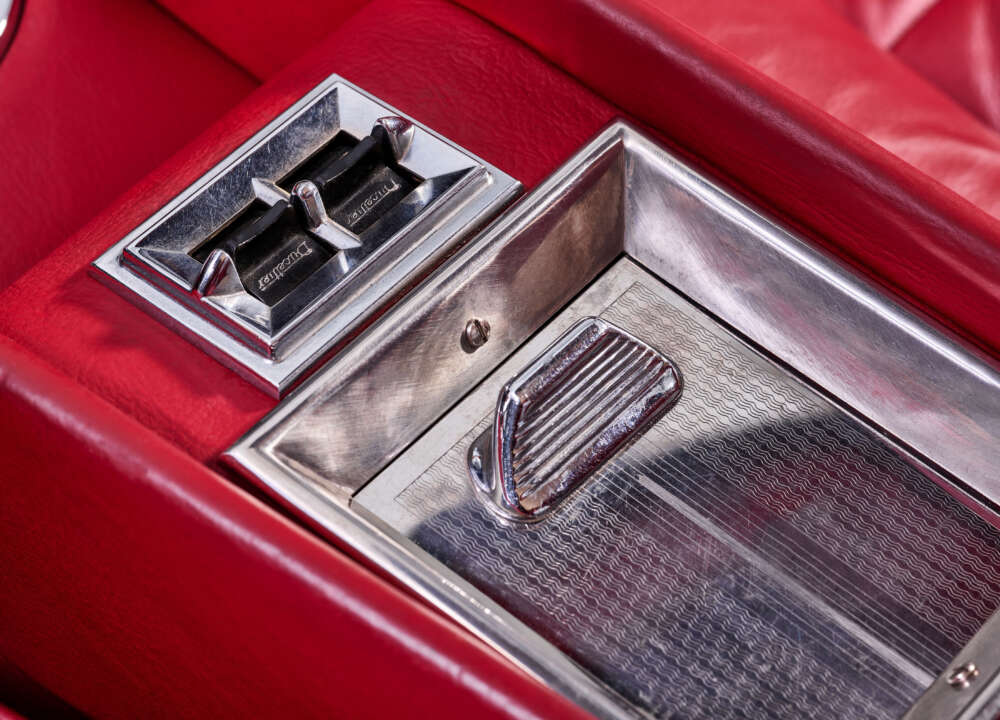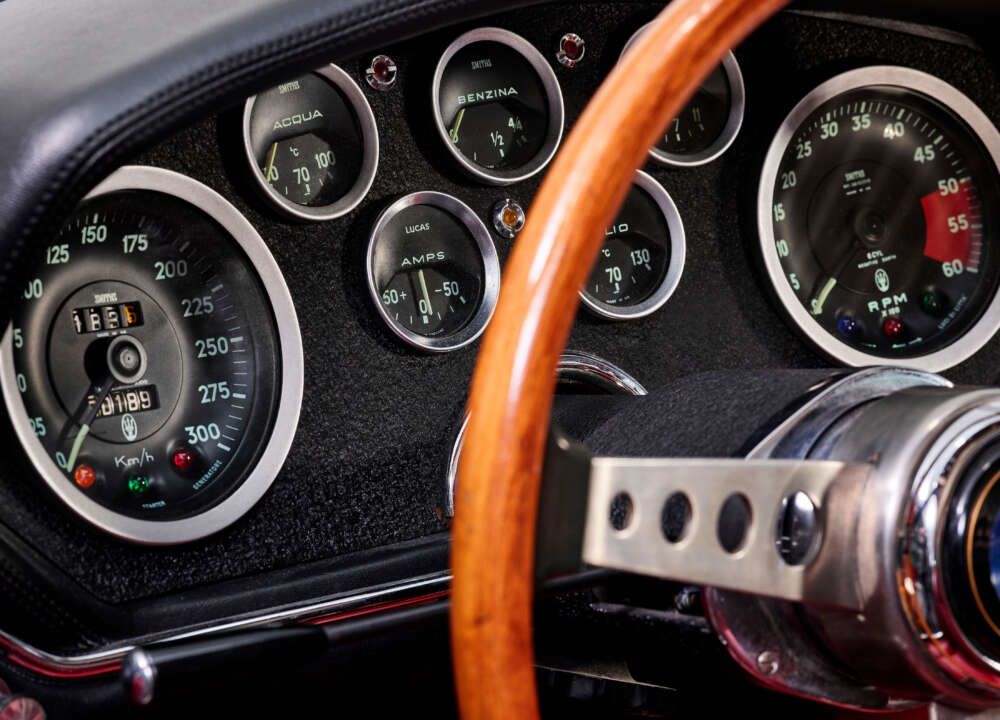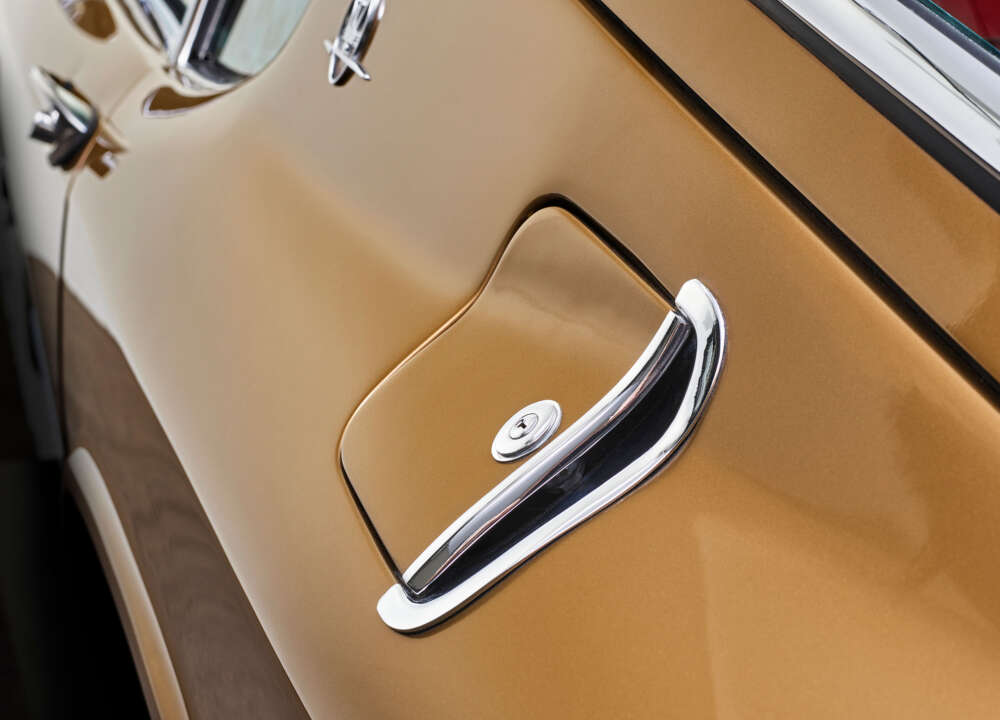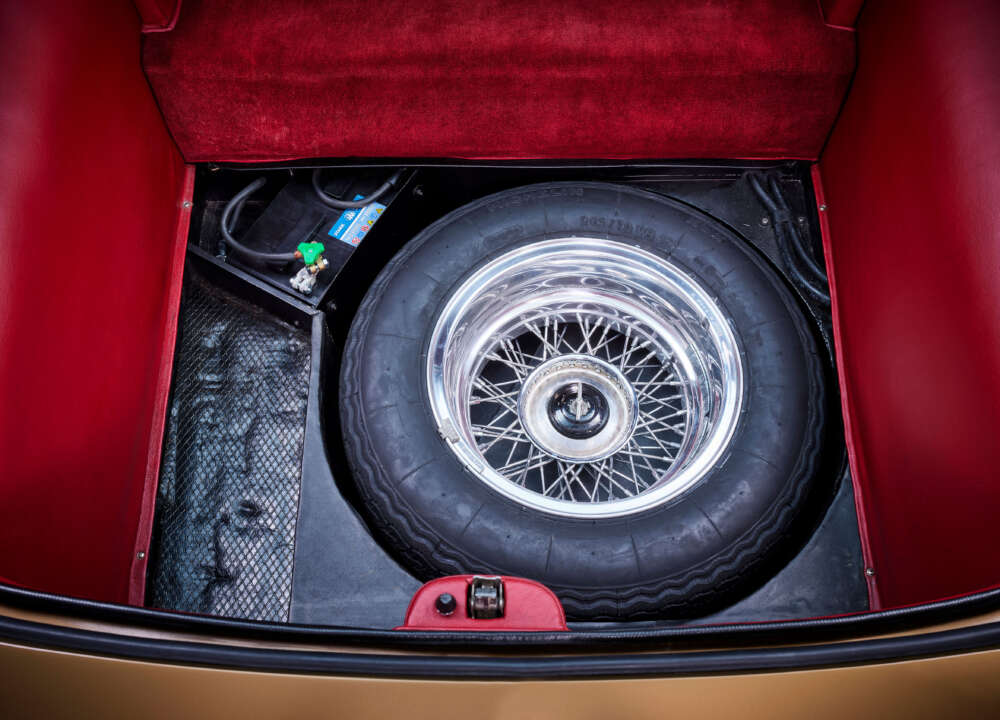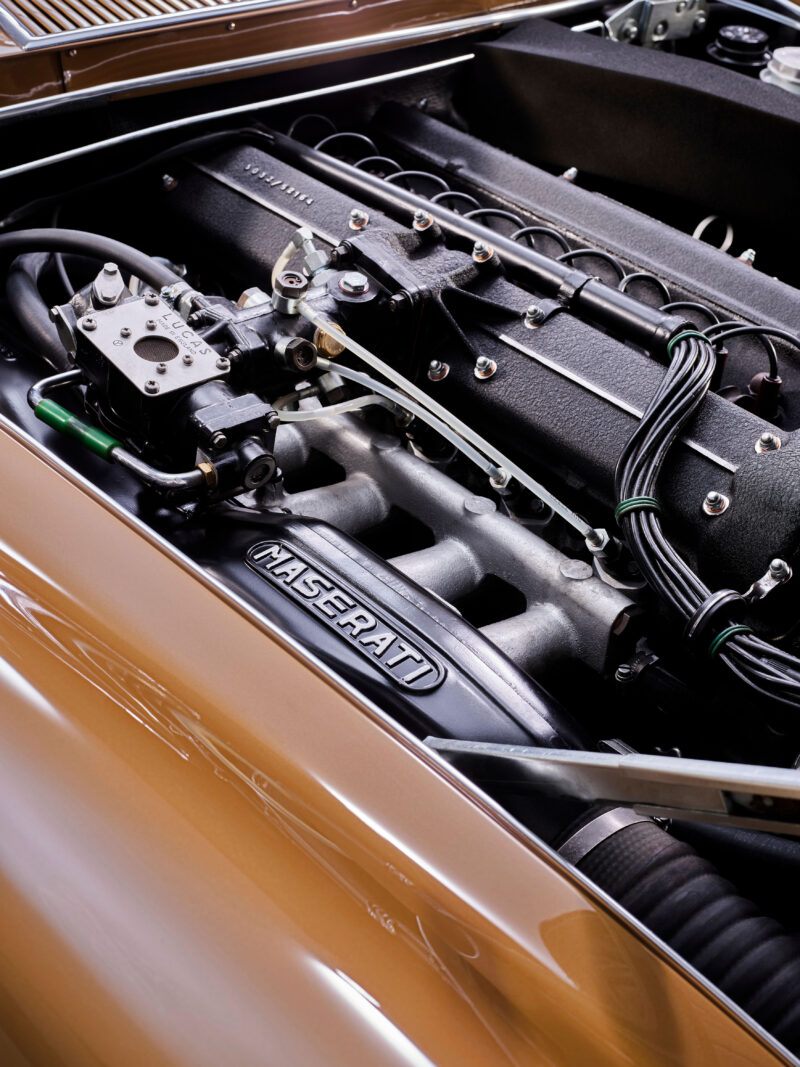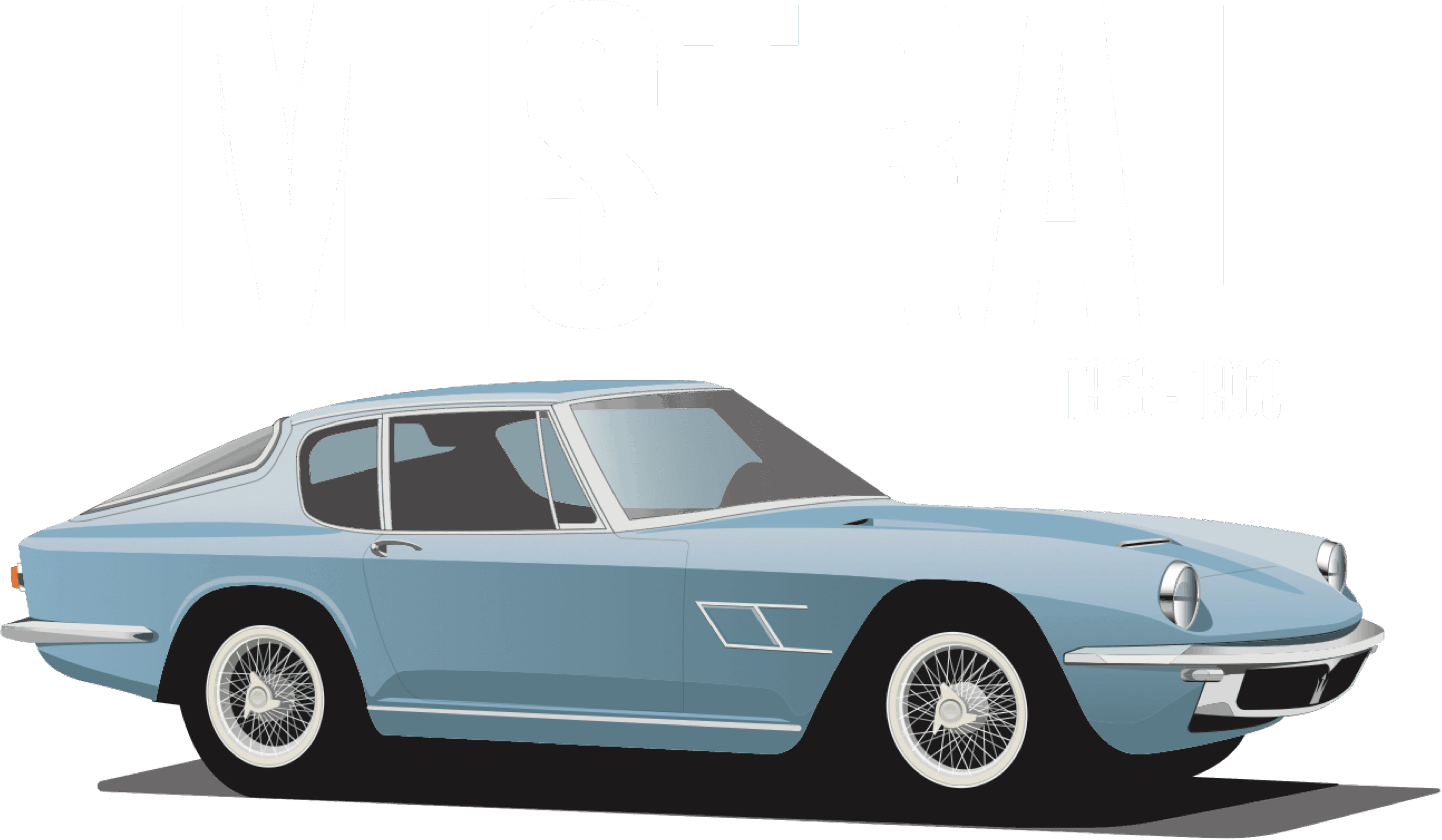
The handsome agile and fast conclusion to the inline six-cylinder era.
The Mistral was introduced at the Torino Salone in November 1963 as a “Berlinetta 2 posti”. Immediately its design met universal approval, it was gorgeous with the Maserati elegance, exuding speed but always with class.
Its design was by Pietro Frua who had been trying to be chosen as the designer for a main Maserati production model for years. He finally got his wish with this model named after a wind. It was actually the first one to be thus baptised like so many other future Maseratis. Le Mistral blows in France’s Rhone river valley southwards towards the Mediterranean coast.
Baptised Tipo 109 and with a short chassis that was even 10 centimetres shorter then the Sebring its styling was very much its own with no commonality with the 3500GT and Sebring. It struck onlookers by its homogeneity and simplicity. The front was audaciously innovative in relying on very pure lines. For the first time, the whole air intake was located under the full-width front bumper. The rear used a then unusual hatchback configuration with large glass panel and slightly rearward leaning back end.
The assembly of the first Mistrals did not actually start until the early months of 1964.
Annotation by Dottore Adolfo Orsi in June, 2020.
"The Mistral was not the replacement for the 3500GT. The 3500 made by Touring was a 2+2. The Mistral was born as a “Berlinetta 2 posti”. Maserati had already the Sebring as 2+2, which was remodelled in 1964 with the Series 2.
Maserati had asked Carrozzeria Touring in 1961, to present a new 2+2 model. Still, none of their prototypes which were presented to the public in 1962 and 1963 Motor shows convinced the customers and more importantly, the Orsi family. The 3500GT Touring was difficult to replace, much like the other icon, the VW Beetle. Therefore the Orsi family decided to take up a new challenge, opening new niches and went ahead with the Quattroporte (4 porte, if you look at the first brochure) and Berlinetta 2 posti.
Its production method was quite elaborate and included more stages and subcontractors than usual for Maserati. The factory made the chassis then sent them to Turinese firm, Maggiora, who manufactured and fitted the body. The Berlinetta Mistral had either the body in steel or in aluminium **. These shells then went back to Modena but not to the factory. They went to Officine Padane who then pre-assembled the car including interiors, electrical circuits, glass and fitting of doors, bonnet and hatch. Padane would later have a similar role in the production of the Bora. The shells then went back to the factory where the mechanical components were fitted along with suspension and brakes before testing and sign off before delivery.
The underpinnings were basically unchanged from late 3500GT and Sebring specs, that is to say, leaf-sprung rear axle, four-wheel discs.
Mechanically the Mistral was launched in 3,5-litre form, but in actual fact, a majority of them were produced in the 3,7-litre capacity at first then 4 litres in the final production batch. Lucas fuel injection but of a new indirect oil-less type- and a ZF five-speed transmission were standard. Options included air conditioning and a three-speed Borg-Warner automatic gearbox though this was very rare indeed. A limited-slip diff was available but rarely chosen. A second series was released in 1966 with new tyres dimensions and gauges.
** Fredric Gustafsson, President of the Maserati Club Sweden informed us that he asked both Fabio Collina and Ermanno Cozza if they know how many were made of each. The answer is that nobody knows. However, early cars tend to be more common in aluminium and later cars in steel, but exceptions occur both ways. (Maserati Club President's meeting, Modena, December 2019).
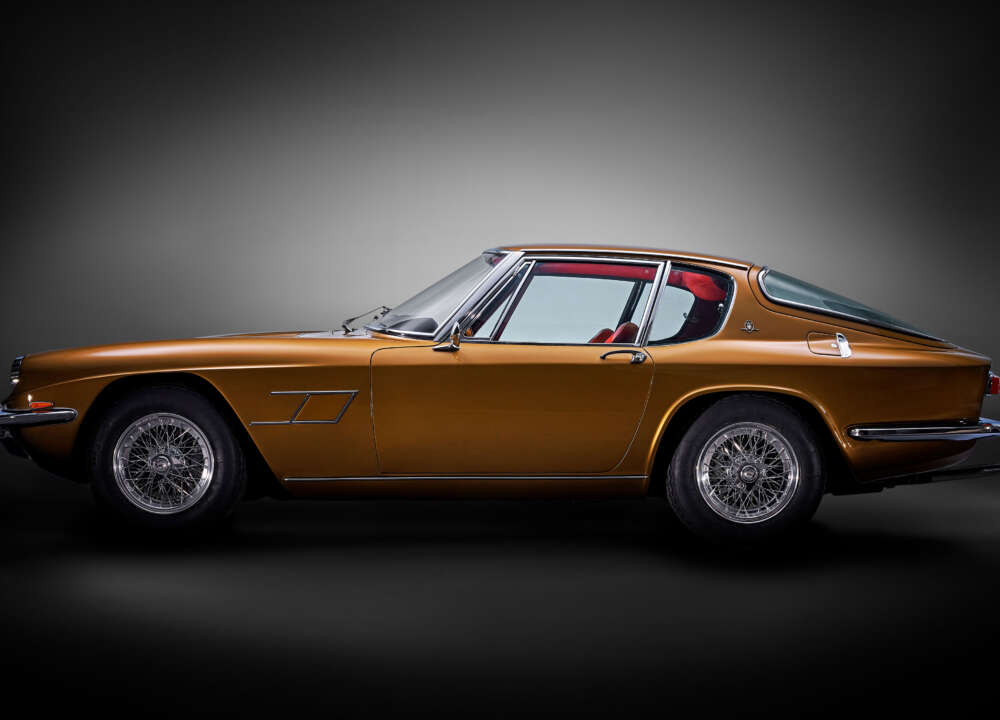
The interior was beautifully appointed and finished, while the rear hatch gave full access to a huge trunk. Some cars had an optional trunk shade which was spring-loaded and recoiled into its housing tube, situated behind the passengers. When not fastened by its hooks, it was at the back of the trunk. This later became common amongst various marques but was quite the novelty back then.
At the wheel, any Mistral feels light and as easy as a bicycle, slim on its toes –or rather its thin tires- with light controls, the delicate gear lever and slender steering wheel fitting well in hand. A nice change compared to excessively wide and heavy modern sports and grand touring cars. It is eager to go, and while all versions perform with gusto, a four-litre has more performance than one would think and could reach 250kph which in those days was a feat very few cars achieved.
Specifications
844 cars built between 1963 - 1969. In 1963 3 cars were built with 3.5 engine, between 1964 – 1969 387 cars were built with 3.7 engine, between 1965 – 1969 454 cars were built with 4.0 engine.
In 1969 the model was retired as the last of the inline 6 cylinder model evolution.
There were no one-off Mistrals perhaps because its design is so pure, so successful so right. One special should be mentioned as it used a Mexico chassis engine platform: the third Mexico prototype by none other than Frua himself. Unlike the other two which used slightly modified Mexico chassis this one, made in 1969 on Mexico chassis AM112-F-588 used a Mistral body. While the rear is made purer, its details cleaned up, the nose takes the Mistral design further into the future with the headlights removed from the bonnet. Now uniformly sloping and smooth, relocating them inside the radiator grille making it look somewhat like an abyssal fish yet still exuding class. It has for most of its life been in the US in various major collections. Interestingly this was likely Frua’s last attempt to renew the contract with Maserati for a restyled Sebring or new Mexico version. But time had passed by, and it was not to be.
Mistrals saw a fair amount of movie and TV series use but not in any significant production. One was featured extensively in the 1972-74 series The Protectors with Robert Vaughn.
Another was used in a short movie called Dad can I borrow the car (1970). It was a Disney movie, not a cartoon but the appearance of the car was slightly modified to make it look like a cute character, a precursor of the recent Car movie cartoons.
Two very short cameos in major movies should be noted: in the 1965 Repulsion with Catherine Deneuve, one passes by in London streets probably accidentally. Of course screen siren Deneuve has owned at least one Maserati herself. Another can be seen -but very much planned as a prop- at the home of a protagonist in the 2008 James Bond Quantum of solace.
Engine
6 cylinders, in-line, light-alloy block
3694 cc and 4014 cc from 1966
Power output: 245 hp; evolved to 265 hp
Body
Two-door Coupé, 2+2, Body either in steel or aluminium with doors and hood always in aluminium.
Designed by Frua
Performance
235 kph to 255 kph
Competitors
The beautiful Ferrari 250 GT Lusso was made from 1962 to 1964. Just like the Mistral, it was the very last of the 250GT series before being replaced by the 275 and 330 series (the Ferrari 275GTB is also a competitor for the MIstral). Its 3-litres V12 developed 240hp via a relatively tame single cam per bank version of that engine. With Lusso / luxury in its name, it was a Ferrari for those requiring comfort with good performance, not all-out speed. Very comparable to the Maserati ethos. 351 were built. They sell today for 1.3 to 1.5 Million Euros so are six or seven times more costly than a Mistral. The Aston Martin DB6 was made from 1965 to 1971 with a four-litre straight 6 282hp engine and a beautiful body. This was a lightly evolved evolution restyled inhouse of the DB5 which had been designed by Touring. 1788 were made. It feels heavier than a Mistral behind the wheel, but its James Bond association starting in the movie Goldfinger has given it legendary status. They sell for anywhere between 160.000 and 400.000 Euros. Significantly more than an equivalent condition Mistral.
In comparison, the quicker DB6 vantage can exceed half a million Euros. The Iso Grifo was made from 1963 to 1974. While of larger size and equipped with a large capacity American V8 (mostly Chevrolet but some with Ford motor), it competed for the same buyers as the Mistral. 413 were built, some even with 7-litre engines, but such extravagance did not survive the 1973 energy crisis, and Iso soon went bankrupt. In price, they vary a lot with recent auction sales mostly between 150.000 and 300.000 Euros with some recently fully restored exceptions around half a million Euros. Indeed their condition varies a lot, and only a brave man will buy one that has suffered from humidity as restoration costs will be significant.
Valuation
During the 2016-17 International auction season eight Mistral Coupés were offered, half of which did not sell, as was typical during that phase of market readjustment. Of the four that did sell one reached 224.000 Euros at the RM Sotheby’s Duemila Ruote auction in Milan November 2016 while two others in the same gigantic auction sold for 156.800 and 123.200. The final car that sold for 115.000 was via a small auction in Salzburg, Austria in October 2016.
The following 2017-18 auction season saw six Mistral Coupés offered plus, to be complete, one born as a coupe but cut later into a Spyder. The latter, offered at Bonhams Goodwood revival auction September 2017 did not sell. Of the six Coupés, four did not sell. In contrast, one sold for 200.200 Euros at a small auction at Monthlery near Paris September 2017 and another for 172.840 Euros at Artcurial Retromobile auction February 2018.
This should all be seen in perspective: before the market rose a well maintained and rare 4-litre version sold for 50.037 Euros at the February 2012 Artcurial Retromobile auction. These fantastic GT’s have arisen from forgotten to appreciated status.
We are aware that the valuation of this car is very subjective and depends on many criteria. That is why auctions are used as a barometer to sense where the market is moving. However, premium restored or preserved classic Maseratis change ownership through private sales ( and seldom in an auction). As a result, rarely do we discover the price for an off-market transaction.
Persuasion
Contrary to many English sports and GT cars in that era, the Mistral has plenty of room for driver and passenger. You never feel cramped, and even large and tall drivers will be at ease. It has a unique beauty, no owner has ever dared to try to modify its appearance. Don’t think of it as a reskinned Sebring, it has a personality and charm all of its own. As the ultimate evolution of the inline-six family of Maserati Gran Turismo, it occupies a special place in Maserati history, commandingly so. As an anecdote (June 2020): Mr John Gove who is President of Maserati Club Australia keeps 3 Mistral Coupés: one in Australia, one in Europe and a third one in the USA!
Initial texts by Marc Sonnery.
Registry
This registry is in the hands of the Classiche Masters team and was first started in June 2020. So If you happen to have information about these cars please mail info@classichemasters.com or go to https://join.classichemasters.com/c/mistral-registry . A one-time registration is required.

